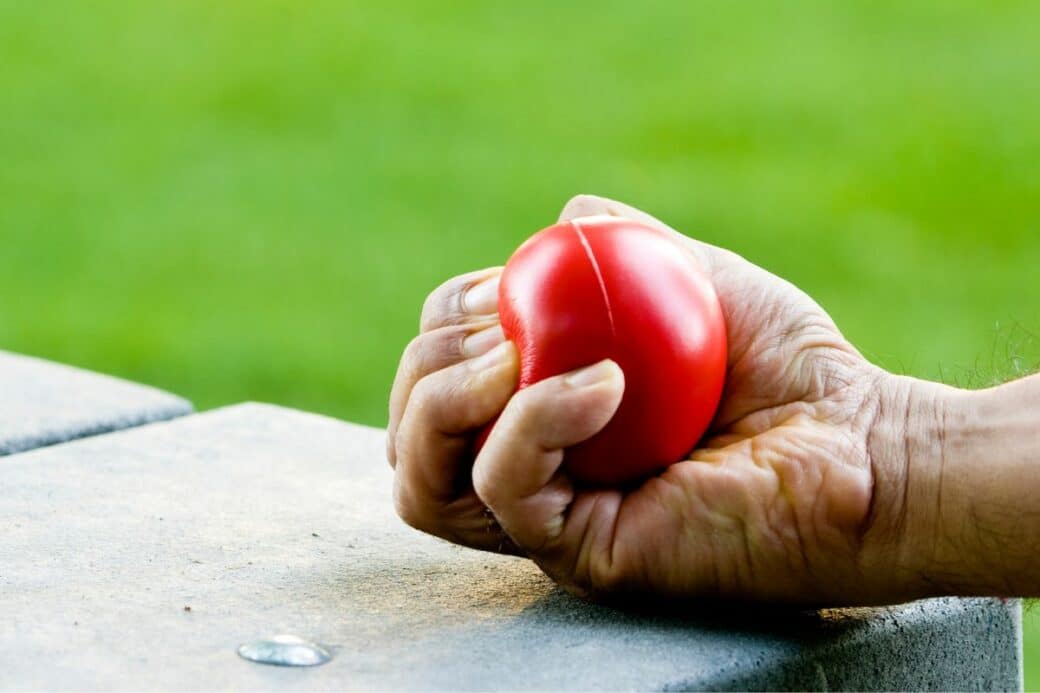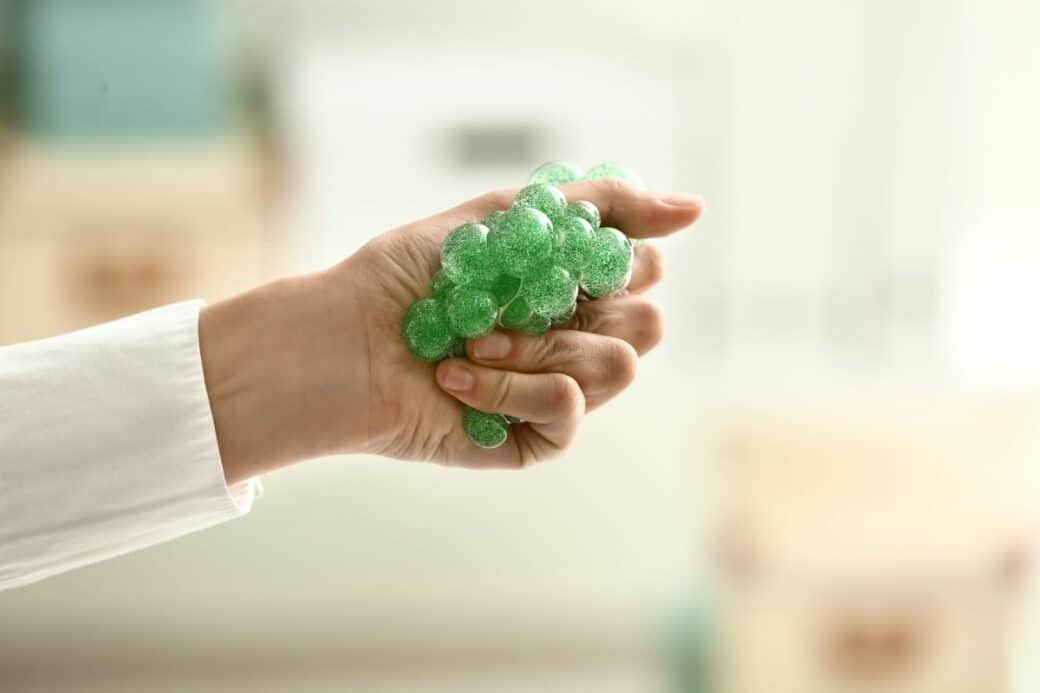Are you looking to enhance your strength and improve your grip? Stress balls might be the answer you’ve been searching for. These small, squishy balls are not just for squeezing away tension, they can also act as an effective tool to strengthen your hands. With regular use, stress balls can help increase finger and forearm strength, leading to improved performance in activities that require grip strength, such as sports, weightlifting, and even everyday tasks like opening jars or carrying groceries. So, if you’re ready to take your hand strength to the next level, it’s time to give stress balls a try.

Do Stress Balls Strengthen Hands: Understanding Hand Strength
Importance of hand strength
Hand strength plays a crucial role in our daily lives, as our hands are constantly engaged in various activities such as lifting, carrying, gripping, and manipulating objects. Strong hands are essential for performing everyday tasks with ease and efficiency. They contribute to our overall physical strength and dexterity, allowing us to excel in many aspects of our lives, including sports, hobbies, and even professional endeavors.
Factors affecting hand strength
Several factors can affect hand strength, including genetic predisposition, age, overall health and fitness level, and the degree of hand usage. Additionally, factors such as injuries, medical conditions, and repetitive strain on the hands can also impact hand strength. It is important to understand these factors and take necessary measures to maintain and improve hand strength.
Concept of Stress Balls

Definition of a stress ball
A stress ball is a small, handheld object that is typically made of a soft and pliable material. It is designed to be squeezed, kneaded, and manipulated with the hands as a means of relieving stress and tension. Stress balls come in various shapes, sizes, and textures, offering a wide range of options to suit individual preferences.
Materials used in stress balls
Stress balls are usually made from materials such as foam, gel, or fabric filled with a malleable substance like sand, rice, or gel beads. These materials provide the necessary resistance and flexibility required for effective stress relief. The choice of material may depend on factors such as comfort, durability, and the desired sensory experience.
History and evolution of stress balls
The concept of stress balls dates back several centuries. Ancient Chinese, Greek, and Roman civilizations used certain hand exercises and manipulative objects as a way to reduce stress and promote relaxation. Over time, the design and materials of stress balls have evolved to cater to modern needs and preferences. Today, stress balls have become widely popular as a simple yet effective tool for stress relief and hand strengthening.
How Stress Balls Work
Principle behind stress balls
The principle behind stress balls lies in the concept of progressive muscle relaxation. By squeezing and releasing the stress ball, you engage and then relax the muscles of your hand and forearm, creating a cycle of tension and relaxation. This repetitive action helps to increase blood circulation, release muscle tension, and promote a sense of calm and relaxation.
The mechanism of stress relief
When you squeeze a stress ball, the pressure applied on the hand and forearm muscles stimulates the receptors within those muscles. This sensory feedback triggers the relaxation response in the brain, leading to a reduction in stress and anxiety. The rhythmic squeezing and releasing of the stress ball also serve as a form of catharsis, allowing you to release built-up tension and frustrations.
The link between stress balls and hand strength
Regular use of stress balls not only helps in stress relief but also contributes to strengthening the muscles of the hand and forearm. As you squeeze the stress ball, the muscles in your hand and forearm are engaged and exert force against the resistance provided by the ball. This repetitive exercise helps to improve muscle tone, endurance, and grip strength over time.
Scientific Evidence on Stress Balls Strengthening Hands
Overview of studies conducted
Numerous studies have been conducted to evaluate the effectiveness of stress balls in improving hand strength. Researchers have utilized various methodologies, including measuring grip strength, analyzing muscle activity, and assessing the impact on hand function. These studies aim to provide scientific evidence on the benefits of stress ball usage for hand strength.
Findings supporting stress balls for hand strength
Several studies have consistently demonstrated that regular use of stress balls leads to improved hand strength. Research has shown that individuals who engaged in stress ball exercises experienced significant increases in grip strength and muscle endurance compared to those who did not engage in such exercises. These findings provide strong evidence for the effectiveness of stress balls in strengthening hands.
Contrary findings and controversies
While the majority of studies support the positive effects of stress balls on hand strength, there have been a few contradictory findings and controversies as well. Some studies have suggested that the benefits of stress balls may be minimal or temporary, especially when compared to other hand strengthening exercises. However, further research is needed to explore these conflicting claims and determine the true extent of stress ball effectiveness.
Analyzing the Mechanism of Strengthening Hands with Stress Balls
Identifying targeted muscles
When using stress balls, various muscles in the hand and forearm are engaged, including the flexor muscles, extensor muscles, and intrinsic hand muscles. The repetitive squeezing action of the stress ball effectively targets these muscles, promoting their strength and flexibility. By specifically targeting these muscle groups, stress balls provide a comprehensive workout for the hand and forearm.
Understanding muscle tension and relaxation
The cyclic pattern of tension and relaxation created by stress ball exercises is key to strengthening hands. When you squeeze the stress ball, the muscles contract, generating tension and exerting force against the resistance. Upon release, the muscles relax and return to their resting state. This constant interplay between tension and relaxation helps to enhance muscle strength and coordination.
Impact on grip strength and dexterity
Grip strength is an essential component of hand strength and plays a vital role in various activities such as lifting heavy objects, sports performance, and maintaining overall hand functionality. Regular use of stress balls has been shown to improve grip strength significantly. Additionally, stress ball exercises also contribute to enhancing finger dexterity and motor control, leading to improved hand coordination and fine motor skills.
Benefits of Using Stress Balls for Hand Strength
Physical benefits
Using stress balls for hand strength offers several physical benefits. Improved grip strength allows for better control and stability when handling objects. Strengthened hand muscles also help to prevent injuries such as sprains, strains, and carpal tunnel syndrome. Furthermore, enhanced hand strength carries over to other physical activities, such as sports and hobbies, enabling you to perform at your best.
Psychological benefits
In addition to the physical benefits, using stress balls for hand strength also provides psychological benefits. The act of squeezing a stress ball can help relieve stress, reduce anxiety, and promote relaxation. The rhythmic motion of squeezing and releasing can serve as a form of mindfulness practice, allowing you to focus your attention on the present moment and find inner calm. The sense of accomplishment and satisfaction derived from improving hand strength can also boost confidence and overall well-being.
Therapeutic applications
Stress balls have found applications beyond stress relief and hand strengthening. They are widely used in occupational therapy and rehabilitation settings to assist individuals recovering from hand injuries or conditions such as arthritis. The therapeutic benefits of stress balls extend to improving fine motor skills, promoting joint flexibility, and aiding in the recovery of hand function.
Potential Risks and Precautions
Overuse of stress balls
While stress balls can be highly beneficial, it is important to avoid excessive and prolonged use, as it may lead to overuse injuries or muscle imbalances. It is recommended to use stress balls in moderation and incorporate rest periods between sessions. Listening to your body and avoiding excessive fatigue or pain is crucial in preventing potential risks associated with overuse.
Pre-existing medical conditions
Individuals with pre-existing hand or forearm injuries, medical conditions, or chronic pain should consult with a healthcare professional before incorporating stress balls into their hand-strengthening routine. Certain conditions, such as tendinitis or carpal tunnel syndrome, may require specific exercises or modifications to avoid exacerbating symptoms. A healthcare professional can provide guidance on appropriate usage and address any specific concerns.
Choosing the right stress ball
When selecting a stress ball, it is essential to consider factors such as the material, size, and density that best suit your needs and comfort level. It is advisable to test different types of stress balls to find the one that provides optimal resistance and sensory feedback. Additionally, ensure the stress ball is durable and does not contain any harmful substances that may cause skin irritation or allergies.
Alternative Tools for Hand Strength
Resistance bands
Resistance bands are a versatile tool for hand strengthening exercises. They provide external resistance when stretched, engaging the muscles of the hand and forearm. By performing various movements and exercises with resistance bands, you can effectively target different muscle groups and gradually increase the challenge as your strength improves.
Grip strengtheners
Grip strengtheners are handheld devices specifically designed to improve grip strength. They usually consist of two handles with a spring or resistance mechanism in between. By repeatedly squeezing the handles together, you engage the hand and forearm muscles, similar to stress ball exercises. Grip strengtheners offer a focused and intense workout for hand strength.
Hand exercisers
Hand exercisers are compact devices with finger or hand grips that allow for targeted resistance training. They provide a range of resistance levels and are suitable for individuals looking to strengthen individual fingers or improve overall hand strength. Hand exercisers are particularly beneficial for musicians, athletes, and people recovering from hand injuries, as they target specific muscle groups responsible for intricate hand movements.
Best Practices when Using Stress Balls for Hand Strength
Frequency of use
To maximize the benefits of stress balls for hand strength, it is recommended to incorporate regular and consistent usage into your routine. Start with a few minutes of daily practice and gradually increase the duration as your muscles acclimate to the exercise. However, it is important to listen to your body and allow for rest and recovery days to prevent overexertion.
Techniques for best results
To ensure optimal results, proper technique is essential when using stress balls. When squeezing the stress ball, aim to exert a steady and controlled force rather than a sudden or jerky movement. Variation in grip and hand positions can also help target different muscle groups. Experiment with different squeezing patterns and focus on maintaining good posture and relaxed breathing throughout the exercise.
Combining with other hand strength exercises
While stress balls offer significant benefits for hand strength, combining them with other hand strengthening exercises can further enhance results. Incorporating activities such as finger curls, hand squeezes using resistance bands, or wrist curls with weights can provide a well-rounded workout for the hand and forearm muscles. Consult with a fitness professional or therapist to create a comprehensive exercise plan tailored to your specific needs.
Stress Balls in a Holistic Approach to Hand Strength
The role of diet and hydration
Maintaining a healthy diet and staying hydrated have a significant impact on overall hand strength. Consuming a balanced diet rich in essential nutrients, vitamins, and minerals supports muscle health and recovery. Proper hydration ensures optimal muscle function and joint lubrication. Including foods rich in omega-3 fatty acids, such as fish, nuts, and seeds, can also help reduce inflammation and promote joint health.
Importance of rest and recovery
Just like any other muscle group, the muscles of the hand and forearm require adequate rest and recovery to grow and strengthen. Allow for rest days between stress ball sessions and avoid excessive strain on the muscles. Getting sufficient sleep and practicing stress-management techniques can also contribute to optimal muscle recovery and overall hand strength.
The effect of other physical activities on hand strength
Incorporating other physical activities that engage the hands and forearms, such as weightlifting, yoga, or rock climbing, can complement stress ball exercises and contribute to overall hand strength. These activities provide additional challenges and work different muscle groups, further enhancing grip strength, coordination, and endurance. It is crucial to vary your exercise routine and engage in activities that align with your interests and goals.
In conclusion, stress balls have proven to be a valuable tool for enhancing hand strength. Their effectiveness in improving grip strength, promoting muscle endurance, and providing stress relief is supported by scientific evidence. By incorporating stress ball exercises into your routine and pairing them with other hand strengthening activities, you can not only strengthen your hands but also experience numerous physical and psychological benefits. However, it is important to use stress balls in moderation, select the appropriate resistance level, and consider any pre-existing medical conditions. By taking a holistic approach to hand strength, including proper nutrition, rest, and other physical activities, you can optimize the benefits of stress balls and achieve a stronger and more resilient pair of hands.




